At some point or another every website owner must decide what route they wish to take when rolling out their new or conversion domain strategy. There are two options to consider:
- Use multiple ccTLDs, or
- Group all international versions of a domain into one single domain
In terms of how these options can affect SEO, it’s not always the most beneficial to have multiple ccTLDs. Moving multiple ccTLDs to a shared gTLD is much more likely to positively impact your website’s SEO value. Continue reading below to unpack some of the other benefits of ccTLDs and gTLDs on both a small and large scale.
gTLDs
The most basic of website or domain extensions include, but are not limited to, .com, .net, and .org. These extensions are universally known as generic top-level domains, gTLDs. These extensions can be used for any website, as long as the website creator is using the extension within set requirements. To view the frequently asked questions on what the requirements are, click here. gTLDs also do not have a country or geographic designation as the primary focus and so can be used nationally and internationally.
While there are cheap gTLDs like .xyz and .top, it is not recommended to select these just to save a few dollars, as the search engines will often mark them as spam and not to show them to users. Although the licensing on a .com or .org will be more expensive, it is much more likely that your website will be seen.
[insert page='10-best-email-marketing-services-software-for-2019' display='single-related-article-02.php']
ccTLDs
ccTLDs have only two characters, opposed to the three characters in gTLDs. You may have seen the extensions .eu, .fr, .uk, and .cn listed or on websites before, but may have not known that these actually have a specific name and purpose. These extensions are called country-code top-level domains, better known as ccTLDs.
Each country has their own individual domain extension. All are managed by each individual country, except for Australia, whose domain extension is overseen by auDA, the policy authority and industry self-regulatory body for all .au domain names.
Some of the codes are restricted and can only be used by and for citizens of the specific country and/or region the extension is tied to, while others are used open-ended, universally, or changed, all depending on said region’s regulations.
ccTLDs are a simple way to show that your website is targeted at a specific country and is not necessarily intended for broad international designation. For example, you can know that a .fr extension is targeted for an audience in France, and not necessarily for an audience in Australia.
ccTLDs are beneficial for companies wanting to secure the country’s business name, attracting local markets, and the general broad availability of high traffic names in specific countries. If you are looking to register your ccTLD, 101domain is a great place to start, as they have country-based domains for the regions of Africa, Asia, the Caribbean, Central America, Europe, and more. Given the fact that simple and punchy domain names are often already taken, it is recommended that you attempt to lock down a domain name as soon as you can after first conceiving of the idea you have for your website.
If you are interested in broadening your website from a national scale (ccTLD) to the international scene (gTLD), it is necessary that you weigh the pros and cons of different URL structures and domain extensions.
[insert page='discover-the-20-top-social-media-tools-brands-are-using-to-beat-the-competition' display='single-related-article.php']
Downsides of ccTLDs
Even with a strong ccTLD, there are still some negatives. They include having to build up the authority of each individual domain, they could potentially be more expensive than a general gTLD. As well, some ccTLDs require the user to be affiliated with the country in order to access the website, which is not ideal when trying to reach a diverse market.
Some countries also have strict requirements for the use of ccTLDs, so they may take more time to obtain than a general gTLD. These requirements could have restrictions on the purchasing, renewing, and transferring of the code domain names.
Upsides of ccTLDs
For companies that are located in a specific country and are just directly regional, it will most likely be more beneficial for SEO to use a ccTLD, as you can locally target your users (but note: you can still target specific users while using gTLDS). Another positive of using ccTLDs is that you can bring out your creativity with the extension name. If you are a jeweler, let’s say Anthony’s, you can name your website Anthonys.diamonds or Anthonys.engagementrings, that way you can make the domain name simple, direct, and fun.
To see a list of all available ccTLDs, click here.
SEO
SEO should be the primary focus when deciding between gTLDs and ccTLDs. A search engine such as Google will always try to provide the best and most relevant content. Even if your website is being hit under a number of different ccTLDs, it does not necessarily mean that the search engine will accumulate those as several collective hits.
For international companies such as Apple, Amazon, Alibaba, and Berkshire Hathaway, it is more beneficial to have one domain extension, rather than several individual ccTLDs. For example, Apple.com will be more optimal for SEO searches than Apple.eu, Apple.uk, and Apple.au, as it is obvious that more traffic will go to a specific website than a bunch of individual ones.
Even while using a gTLD, you can still target specific users in a designated country by using Google Webmaster’s panel. Google Webmaster is a suite of Google’s SEO tools which provides data, analytics, and configuration control for your website within Google. It a free service that helps the website owner evaluate and maintain the performance of their website in Google’s search results. For more information on how to work with Webmaster, click here.
It should also be noted that it is not necessary to use Webmaster to appear in Google search results.
Google has made it very clear they do not intend to reward or provide extra ranking for new gTLDs, such as .cars, .attorney, .diamonds. They will continue to treat these gTLDs as typical, basic, and expected gTLDS, like .org and .com. Therefore, while there is no disadvantage of having these gTLDS, there is also no particular advantage.
It should also be noted that, while Google dominates the US market, Yahoo and Bing still have about a 6% search engine market share. In the Chinese market, Baidu dominates. In Russia, their number one search engine is Yandex.
[insert page='breaking-down-the-2019-best-landing-page-builders' display='single-related-article-02.php']
In Conclusion
If you are trying to build a global business, it’s more beneficial to build up all of your SEO on one global site, rather than trying to build up the individual SEO on sites for each country. However, if you are trying to build a regional business, it may be more beneficial to have a ccTLD as it indicates your target region.
It is recommended that you weigh the pros of cons of each domain extension, while also taking into account who your audience is, what your company’s goal is, how you plan to reach that goal, and if you plan to eventually expand from a regional market to an international market.
In a micro sense, this decision does not directly affect your consumers if your vision is set, but from a macro point of view, if there is any chance of growth, we recommend directly creating a gTLD.
A well-researched set of keywords is pivotal to any successful SEO strategy – and therefore pivotal to the success of any modern website. What’s more, targeting e-commerce keywords specifically can mean the difference between successful keywords, and successful keywords AND conversions.
- Ranking for chemical-free sunscreen,
- Is not the same as ranking for chemical free sunscreens under $15
At the end of this article you should have an expertly curated keyword list to boost your e-commerce platform.
But why are keywords so important? Let’s ask Shopify, one of the most commonly used e-commerce stores, and one which likely hosts some of your own websites.
“Every time someone does a search, the search engine must decide which handful of results to display from hundreds of thousands of possible pages. It's up to the search engine algorithms to determine the best and most relevant matches for every single search. This is why it's so important to choose your keywords carefully, so that the search engines can match and display your site in the search results to the most relevant keywords searches”.

PICTURED: This chart shows a breakdown of traffic flow onto each page of a Google search result. As you can see, the returns from getting your page onto the 1st, 2nd, and 3rd pages represent a king’s ransom in the overall population of searches. Image source, Shopify, Chitika.
Why is keyword research necessary for e-commerce
To answer that question let’s look over 5 different ways e-commerce platforms can generate traffic. They could…
- Publish posts of content on social media platforms like Instagram and Facebook, or owned media platforms like blogs or podcast channels
- Try and publish articles and content on other websites to generate a healthy distribution of backlinks
- Take out paid media campaigns like native or banner ads, or those on social media platforms like Facebook and Instagram
- Use email marketing software to send newsletters and other broadcasts to a subscriber base
- Put some of their products on Amazon as well, with proper links going back to the original site
There are other ways, these are only some.
[insert page='step-by-step-guide-to-keyword-research' display='single-related-article-02.php']
Here’s how you know SEO gives you something these methods cannot
What a proper SEO and keyword optimization strategy gives you is the ability to connect with members of your audience who don’t know you exist but that need your goods and services.
One simple reason explains this phenomenon – people who are looking for to buy a product or service you offer are looking for it.
Audience members looking at paid, shared, or owned media campaigns are not necessarily the people who are going to convert into paying customers, readers, subscribers, etc.
Someone who Googles “chemical-free sunscreens under $15” is in fact looking to buy chemical-free sunscreens under $15.
They’ve already taken a meaningful action towards converting, i.e. seeking out the product they want.
Making sure your keyword and SEO strategy get you in position to be found by these seekers, is exactly why keyword research is so important for e-commerce stores – because it allows you to access the most profitable kind of audience.
Many of the other reporting tools in SEMrush are capable of reporting on your competitors as well, and maximizing your spying efforts is easy with SEMrush.
Some things to make special note of when making a keyword strategy for e-commerce
Look for keywords that are specifically used in purchases within your niche.
For example…
- You could try and rank for “chemical free sunscreen”
- Or you can try and rank for “chemical free sunscreen under 15 dollars”
You can make attempt at this by entering this long-tail keyword into the meta-description on your store page.
The next thing you’ll want to do is get out a pen and paper and begin to keep track of which keywords produce what results. These results could include…
- Keyword difficulty
- Search volume
- Cost per click
- Competitive density
- Conversion Ratio
These are important to keep track of because certain keywords will rank higher with certain criteria, but perform worse under others. For example questions – questions are searched a lot, but usually convert very little. This is because most search engines produce answer boxes before the top ranked page which just gives you the answer to the question without requiring the searcher to actually visit the website.
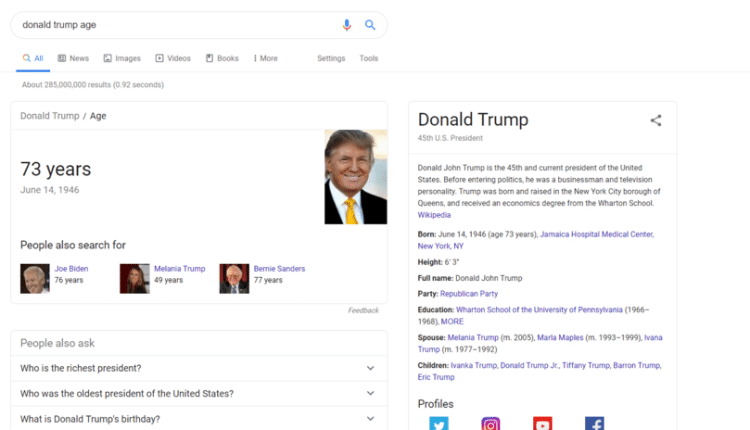
PICTURED: A Google answer box to the question, “Donald trump age”.
You won’t want one of these boxes appearing when people try and search for your product, so try not to attack any keywords which produce one when entered into Google.
[insert page='get-a-ringside-view-to-competitive-strategies-with-your-semrush-marketing-toolkit' display='single-related-article.php']
With that in mind, let’s build a list and strategy!
4 Steps to building a list of e-commerce keywords
1) Your first step should be to create your seed list of keywords.
This list is the collection of keywords you hope to rank for above all others, that represent the ideal descriptions of your business as a whole or the product you want to sell as well as those which can easily be expanded to include specific tails or questions.
In order to help you genesis a seed list of keywords, it would help to understand all the different kinds of keywords.
- Question – “How to clear up acne?”
- Broad-based – “Acne medication.”
- Long-tail – “Organic acne medication for under $30 dollars ”
- Location-specific – “Dermatologist near me”
- URLs – www.acneistheworst. biz
Picking a good keyword is often about finding a keyword that someone would likely search for in all of these different scenarios.
2) Your second step should be to enlist the help of keyword planning tool
You can use one of the following keyword planning tools to come up with additional keyword ideas as well as test them in real time.
1. Google Keyword Planner has been one of the most trusted and well-known keyword analysis tools among digital marketing and SEO professionals for a long time. The main purpose of using the keyword planner tool is to access the average monthly search volume of relevant keywords. This helps you determine the profitability of your targeted keywords or key phrases. Here is a screen shot of the Google Keyword Planner dashboard.
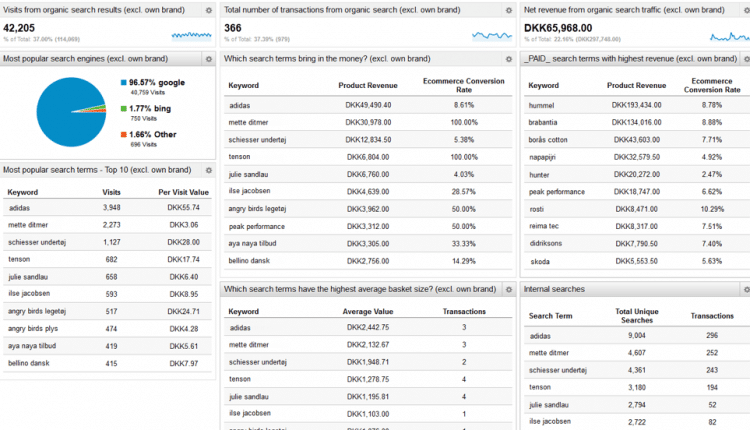 2. Answer the Public is a question-based keyword research tool which provides a long list of prepositionally or alphabetically sorted keyword suggestions. This tool is also helpful to generate topic and content ideas. Here is a picture of me searching for the keyword “chemical-free sunscreen”.
2. Answer the Public is a question-based keyword research tool which provides a long list of prepositionally or alphabetically sorted keyword suggestions. This tool is also helpful to generate topic and content ideas. Here is a picture of me searching for the keyword “chemical-free sunscreen”.

Finally you can also just use Google searches to generate a field of possibilities. Simply type in your seed keyword, and scroll down to the bottom of the page.
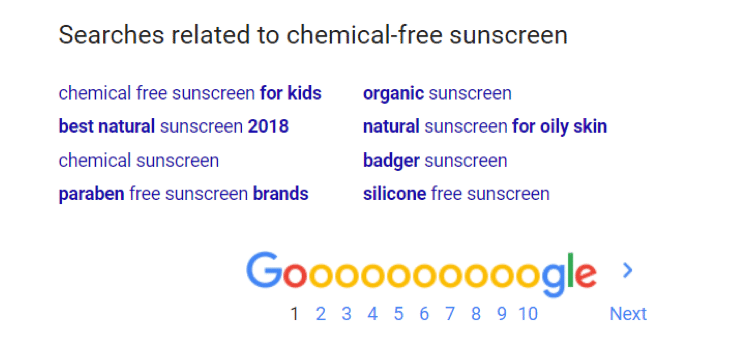
PICTURED: Google automatically generates 8 possible alternatives to the keywords you entered. Try using to researching these keywords in SEMrush to see how productive they are.
Take your ideas from step one and combine them with your ideas generated in step 2
3) Your third step should be taking your list from the first two steps and researching the keywords with SEMrush.com
SEMrush is a keyword planning tool, one of several premier options available on the market today. It allows you to genesis a powerful keyword research and implementation strategy to ensure you are getting the most out of your keywords, and the largest chunk of search engine traffic you can.
Take the list you made earlier to SEMrush and research the quality of the keyword
[insert page='seo-keywords-how-better-keyword-research-gets-you-better-results' display='single-related-article-02.php']
What can I learn from SEMrush research?
Well for example, the following slide is from the “organic research report” that you can generate for your domain at any time.
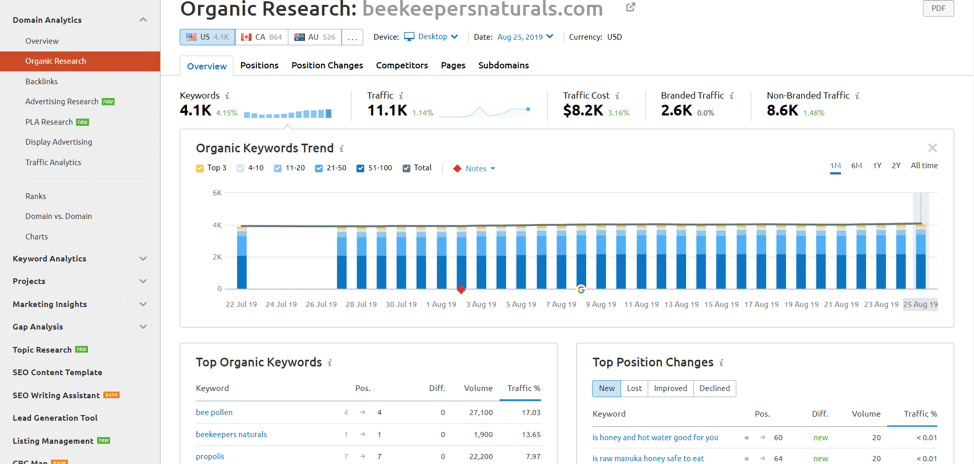
PICTURED: In the organic research report generated free of charge for Beekeepers Naturals, an organic hive products company made through Shopify, the SEO/content/marketing manager can see what keywords are being generated naturally from searches, how they are performing, where the website ranks on the organic keywords in regards to the rest of the internet, and much much more.
You can scroll down to see the various keywords and the metrics you could use for success. For example they rank 4th for keyword “bee pollen”.
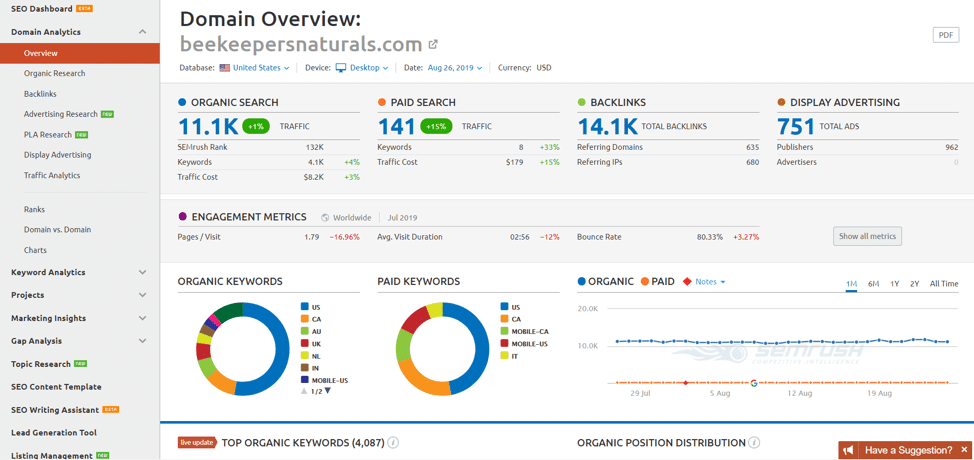
PICTURED: This is the domain overview report – similar in that you can see all kinds of important statistics about where your domain is popular, how much your paid traffic strategies are costing/contributing and more.
These are a few of the functions that help deliver the valuable data needed to create an effective keyword strategy whether your plan is a broad and inclusive one, or a narrow and specific one.
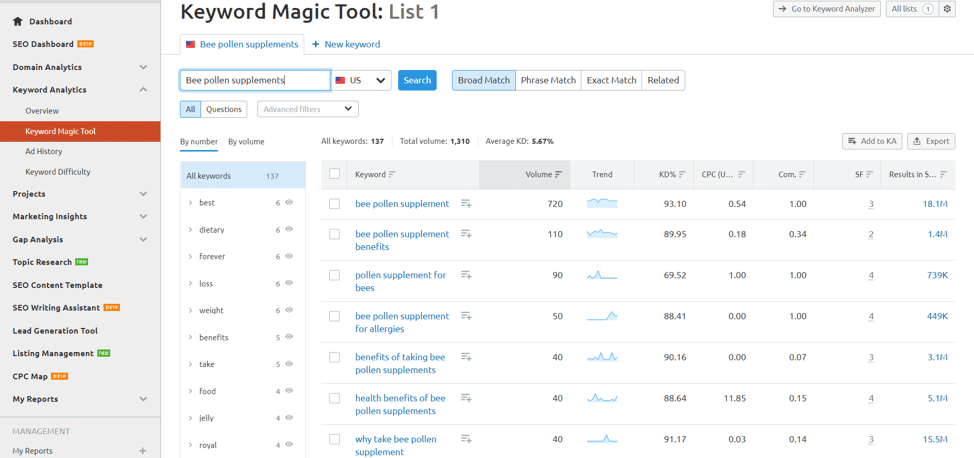
PICTURED: What you have going on in this screen capture is the keyword magic tool in action. It can help you with brainstorming keywords to try and rank for by giving you a more detailed picture of what potential your keyword has. The descending list of keywords in the slide is a list of generated suggestions which SEMrush feels might improve your ranking.
This is where you can take your keyword list to task and see what potential it has for e-commerce. You can take a seed keyword, in this instance “Bee pollen supplements” and see what people are naturally expanding and including in their searches.
4) Your final step should be taking your list that’s been curated with SEMrush, expanded and enhanced therein, and implementing it for a while and see what happens.
In the meantime…
The other truly important advantage with SEMrush and with keyword planning tools in general is that they allow you to spy on your competitors.
How to use SEMrush for spying and reconnaissance
Why is spying on your competitors important? Your competitors are different people with different ideas, and normally, different guesses on what the best keywords are to plan for.
You both might be planning to utilize a similar set of keywords, resulting in a competition for rankings on search engines between the two of your e-commerce platforms. However, if your competitor’s strategy is a little bit more well-researched and implemented, it could mean the loss of thousands in revenue.
At the end of this chapter you’ll be the bonafide James Bond when spying on your competitors.
To best describe the impact of properly researching your competitors, imagine if you will this scenario…
- Two armies of equal size approach each other in wartime with the intent to conduct battle. Army A utilizes reconnaissance planes to scout Army B. The planes gather information on the troop strength of Army B, how many pieces of artillery they have, how they are deploying their forces, and where their formation is weakest.
- Army B has no reconnaissance aircraft, and therefore cannot divine whether Army A plans attack or defend, whether Army A has any armored vehicles, heavy munitions, or artillery pieces, and which of their flanks is most vulnerable.
In this scenario, there can be only one outcome. Army A will win as near as makes no difference, every single time these two armies meet for battle.
Spying continued…
Returning to reality, let’s look at other reasons why keyword research should always include research into your competitors and their strategies.
- Along with your personal keyword strategies, a lot of keyword research is done through looking at organic keywords like in slide 2. These represent how people are stumbling upon your platform with their own ideas. See if your competitors have any organic keywords that are doing well for them, steal them, and then see if they work for you.
- We all have different patterns of reasoning and thought, and since keywords are a bit of a lottery, as well as the capacity to be really specific, it’s important to see what other ways people are coming up with to describe your niche products and services.
- If for over the same keywords, you are unknowingly battling a much larger e-commerce platform, or a much larger number of e-commerce platforms than you thought occupied your niche, discovering so can help steer you into your own avenue of success rather than bashing your head against a brick wall trying to outperform superior competition.
Here’s how you can go about spying on your competition.
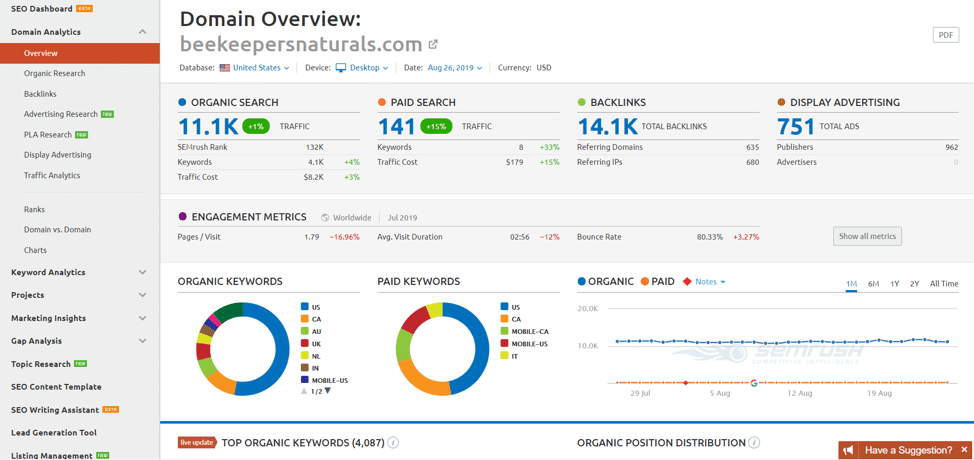
PICTURED: Here’s slide three again. In the domain overview tool, you can analyze your competitors’ domains in addition to your own. All the research you’d receive on your own keyword performance, you can gather from your opponents’ as well.
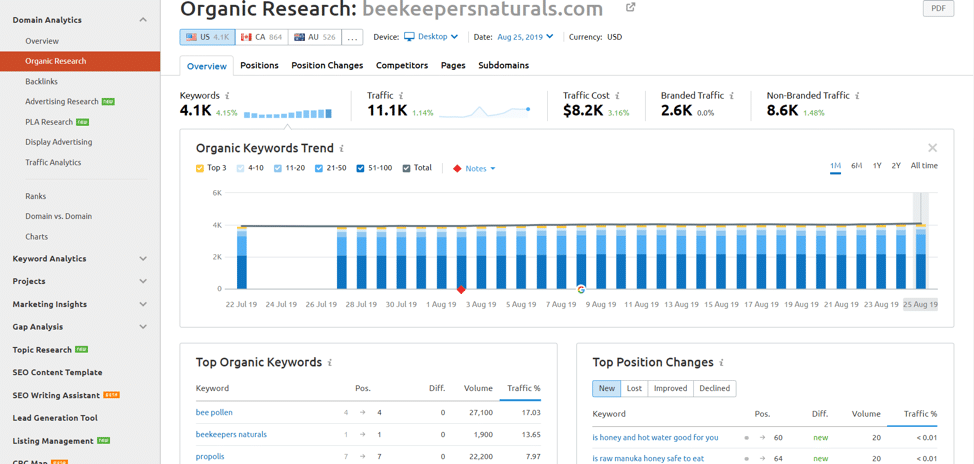
PICTURED: Here’s slide 2 again, and as you can see, the organic research report also has a function to see the organic keywords for your competitors. This way you can see how customers are finding their own ways onto your competitors’ pages and try and direct them to your own instead.
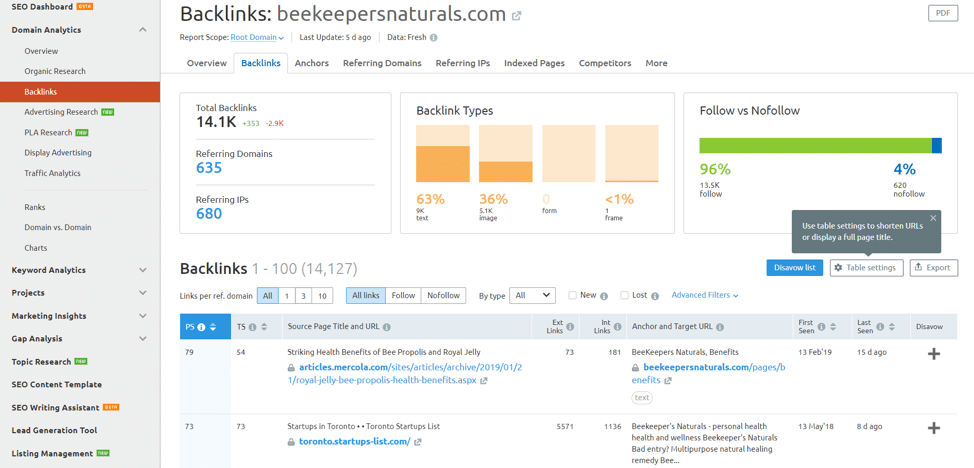
PICTURED: Finally, in this new slide, you can see SEMrush’s backlinks reporter. For novices, backlinks are links to your domain that exist on other domains. In the image, the domain in question is www.beekeepersnaturals.com and the top-ranking feeder link, also called backlinks, are found at www.articles.mercola.com and www.toronto.startups-list.com
Like the other two tools above, you can enter the domain of the competition, and see where their most productive backlinks are placed. Why would this be helpful to know?
- There is a whole field of content marketing called shared media, and it means the traffic and exposure one can accrue for their product, brand, content, or platform from spreading their content on other publications of note, like newspapers, review blogs, and e-commerce platforms like Home Depot or Amazon.
In summary, you can see where your competitors are getting published, and seek publication in the same places.
[insert page='why-a-free-seo-tool-junkie-finally-joined-the-paid-club' display='single-related-article-02.php']
In Conclusion
There’s a lot to gain from tools like SEMrush when trying to establish a keyword strategy for your domain’s SEO. Get creative and be patient and spy on your competitors are some good lessons to take away, especially the spying part.
Natural positioning is the level you reach from simply maintaining content on your website. However natural positioning is difficult to succeed with on its own, so many people look for tricks to increase their ranking beyond what their site is capable of. This article will discuss ways you can improve your SEO position with content.
Google suggests positioning tricks
SEO is to optimize your website with quality content and the proper keywords that can be indexed by search engines. The idea is that the website arouses interest, solves problems or needs, and is oriented in such a way as to cater to users searching for specific information. While many companies conduct their own SEO strategies, others turn to an SEO agency for help.
If you are looking for a shortcut to rank close to first on Google, I'll give you a hint, there. Or rather, while there are some, they are not that effective. Moreover, tricks like keyword stuffing pose a significant risk to your website and generally carry more risk due to Google’s high levels of compliance it demands from websites. If you really want to produce value, content will be your main ally in this mission.
[insert page='why-a-free-seo-tool-junkie-finally-joined-the-paid-club' display='single-related-article-02.php']
This post covers techniques that will work this week and beyond, to help you grow steadily and for which you will never receive a penalty.
1. Know your users
The first thing is knowing who your audience is. Each audience consumes information differently. For example, this post might be called "Content Marketing Tactics for SEO," but it will be aimed at smaller and more specialized audiences and the recommendations will be different. To find out what people are looking for, you can use Google search tools, Google Keyword Tool, and Google Trends.
If you have a website about cats, some of these Google tools will suggest similar keywords to incorporate into your content, such as cat videos, cat websites, or cat photos. Another suggestion might be to go towards synonyms like “pets”, for example. Furthermore, try and think about important niches your audience might be searching for like "videos to cheer you up" or "videos when you're sad”.
2. Have a plan
Content must be planned. You must have clear and numerical goals. To make a good plan, you should understand some useful FAQs on search engine optimization.
3. Use your blog
Your blog is not only a great tool for creating interesting content to rank for, but also for helping posts reach a natural position as well as:
Generate links: If you produce content that is easily shared, users will share it, including links, which will benefit the domain as a whole because it increases a metric called “Domain Authority”.
Create relationships: It's as easy as connecting to a third-party page. Millions of people produce invaluable content on various topics, and of course some of them have created resources that perfectly complement your post. Here’s a great opportunity to create a working relationship, just as you would in an office. Mention it on Twitter, let them know that you talked about it, it can go a long way.
Strengthen your brand: Take care of the aesthetic aspects of your blog, work to strengthen your or your company's identity, use slides, headers and footnotes to meet your branding goals and safeguard aspects such as color palettes, images, etc.
[insert page='10-main-elements-of-a-modern-website' display='single-related-article-02.php']
4. Create joint initiatives
For example, if you talk about social media, why not collaborate with 5 friends to make Tumblr with crap from various brands on Social Media, or WordPress with the clearest paid tweets? This will give you visibility outside of your blog, page, and social profile that will allow you to break out of the routine to experiment with new things.
5. Respect branding as an SEO tool
Branding is very important in SEO. If no one knows you, no one will search for your brand. Remember that SEO traffic based on your brand name is also a natural position. Having a strong brand will not only make people look for you more, but make you a reliable source and increase clickthrough rates.
Content marketing is often thought of as a comprehensive service; one business writes the content, buys media space, and provides SEO optimization. When we stop and think realistically, though, can one company really do all that? In many cases, it’s just not possible, though a great number of content marketing firms represent their services as though this is the case – through the power of white label SEO.
White label SEO is a type of business service similar to outsourcing, but under the terms of white label SEO, content marketing firms are able to rebrand an SEO reseller’s services as their own and pass it on to clients. Sure, you might be able to develop these services in-house, but reseller options are often a better option. Here’s what you stand to gain by opting for a white label SEO partnership.
Scaling At Speed
One of the major challenges of the SEO industry is that most of the work is still manual. You need real people to write content, select sources, and ensure the overall quality of the work, and for small content marketing firms, that can be a real problem. Existing staff may not be trained in current SEO guidelines and it takes time to hire and train new staff.
In comparison to trying to develop in-house services, reseller SEO programs offer companies a high profit margin to partners, and allow content firms to scale up rapidly. In today’s ecommerce environment, there aren’t many companies that want content without the marketing power of SEO behind it, so you need to be able to offer these services if you’re going to stay competitive.
[insert page='five-tricks-to-improve-seo-position-with-content' display='single-related-article.php']
A Matter Of Quality
In addition to supporting businesses that want to scale up their offerings, working with a reseller SEO program to offer white label SEO is a key step because it ensures the overall quality of their offerings. Quality – and the resulting increase in rankings and business – are at the heart of offering SEO services to clients. Additionally, existing reseller SEO programs have connections with top publications, which means that quality content is being paired with relevant, engaging sites that will enhance your clients’ domain authority and put them in the public eye.
A Changing Industry
There was a time when companies rarely offered white label SEO services because the basic rules undergirding SEO were straightforward and easy for anyone to apply. That was back in the days when SEO was largely about keywords. Unfortunately, those days are long over and companies whose sites still boast pages using these strategies could be facing penalties under current search engine guidelines. Experienced SEO resellers, however, can evaluate your clients’ sites to ensure they’re not experiencing keyword cannibalization.
This is all just part of managing expired content, which is an ongoing process since SEO rules are constantly changing. It’s just not realistic for non-specialists to keep up with these algorithm modifications, but by partnering with a reseller, you can still give your clients the benefit of up to the minute knowledge.
[insert page='seo-keywords-how-better-keyword-research-gets-you-better-results' display='single-related-article-02.php']
They Make It, You Bought It
Any time a company wants or needs to provide a new service, they need to make a substantial investment in the development of that product – but why would you do that if you could simply buy the product and rebrand it as your own? While this kind of relabeling may not be common, or even fair game in other industries, especially those selling material goods, it’s a normal and valuable strategy in the content marketing sector. To retool a common phase, they make it, you bought it.
Stop investing your time and money in developing a new specialty skill when there are better ways. An SEO reseller can give your company the boost it needs to serve your clients, increase your profits, and round out your overall offerings with complete services carrying your company’s name and guarantee.
Google has been evolving perennially.
One of Google’s outstanding features, Google Now, has finally gone into oblivion.
Many people found it useful because all that they had to do to keep themselves updated was swipe to the right on the home screen and scroll through topics like sports, news, weather, and upcoming events.
Not anymore – no more reminders and badly targeted new stories.
As luck would have it, Google Now is replaced by Google Assistant, a very advanced and dynamic tool.
Its advances since its launch in 2016 have been unbelievable. It has spread its tentacles among a wide range of devices, such as cars, refrigerators, headphones, and speakers.
Google Assistant is a voice assistant.
Subsequent to phasing out Google Now, the Assistant has become very personal.
It resides in the same space, combining several characteristics with a broad range of voice controls.
It supports voice as well as text – a great tool indeed.
With an interactive voice feature, it lets you do the following:
- Make appointments.
- Discover information on the web, make airline reservations and hotel bookings, find directions, get weather reports, and more.
- It can even perform real time translations.
- Pull out information from calendars and run timers.
- Play media on your Chromecast and other compatible devices.
With Google Assistant you get a futuristic feel. It is smart. It will identify you based on your voice and react to your commands in a smart manner.
Google Assistant is compatible with a slew of connected devices with partners such as Honeywell, Philips Hue, Osram, Logitech, LG Appliances, Ikea, Canary, and more.
Now you have more in store. Google is on a renovating spree.
Gear up for Google Discover.
Google has revolutionized social media feed to influence how people search.
This means you can optimize your content to get the best results.
Now you can get updated content on cards of the home application.
In a spectacular manner, Google Discover updates users on stories that grab their interest. In other words, this tool pulls out information from users’ browsing history and provides them with information even before they start looking for it.
Google Discover is leveraging the vast user base of Google Feed – more than 800 million users.
So, here is a rundown of what is new in Google Discover.
New outline
Google Feed’s basic concept is completely overhauled by focusing on visual content. Things have been made simple for users. Each card has a title and an icon. You click on it and the content you are looking for appears on the feed.
User friendly controls
Users have options at the footer of each card. You can choose how much content you want to see or read.
Broader range of content
Google Feed focused on only news coverage. Google Discover, the new avatar, digs into your search history and provides content from topics that interest you.
Expanded visibility
Google Feed was accessible only via the mobile app of Google; now Google plans to change all this by making the Google Discover feed available in every mobile browser.
It is time to optimize your website by Google Discover and provide punch to your marketing campaigns.
7 Ways Your Competitors Help You Outrank Them on Google
A little healthy competition never hurt anyone, right? Perhaps it is time to take the competition to the next level and use it in your advantage. One of the simplest ways of crushing your competitors is to analyze what they are doing and do it even better.
Use graphics and videos
You can upload fresh videos on Google Discover and add value to your content.
Savvy marketers have all along understood that visual content provides muscle to any form of communication. With videos, you stand to get better returns by getting more fan following, more fresh clients, and more revenue.
Yes, a picture is worth a thousand words and, with Google Discover you will have a wonderful platform to prove this axiom.
“The average attention span has fallen down to 8 seconds from 12,” says a marketing guru. “For us, consumer attention is a precious commodity, so we need to dish out compelling visuals to make the consumer concentrate on what we have to offer”.
This aspect has taken a big leap in inbound marketing as we can see by the transformations in Instagram, Facebook and Twitter.
With Google Discover you can do better than what you have been doing until now.
You can cut the content by half or even more by splitting the information and enhance the whole campaign or content by adding exciting visuals.
Keep in mind that even B2B players have prioritized promotionals by uploading visual content as part of their marketing strategies.
This holds true for any topic.
Take for example, a travel website. With Google Discover, users can see both content and visuals on the best places to see and eat.
Regardless of the business you are in, you can harness your level of expertise of your domain with compelling visuals and content. Discover promises to be exceptional by being one step ahead – and we tend to believe it.
Better control with more contexts
Google Discover can tailor what users want to see.
Remember how Pinterest works?
If you want to see or read more of a content/topic, you must tap on an icon. In a similar fashion, Discover will allow users to see content from a variety of sources on several topics, enabling them to consume new ideas.
All this simply means you will need to optimize content with innovative ideas to align with Google Discover design.
Preferences to read in different languages
This new look of Google will offer something unique to those who speak, read, and write multiple languages.
You may like to read poems in Spanish, follow sports news in German and view movies in English. Google Discover has commenced with English and Spanish and has plans for support more languages soon.
In short, Google Discover can let you know your website users better. It is a great boon indeed to expand your market reach and get more consumers to appreciate your brand.
FREE RESOURCE
How to Pass the Google Analytics IQ Test
20 practice problems to help you prepare for the Google Analytics Individual Qualification Test

While the term “keyword research” has been made popular by the SEO community, identifying and building a keyword-based content strategy is imperative across all digital marketing & communication. To explain this, let’s take a look at what does the word “keywords” really mean and why researching them should be so important to anybody with a digital presence.

Source: https://www.webconfs.com/seo-tutorial/seo-and-keywords.php
What are keywords?
Keywords are search strings users are likely to type when they are searching for your service / product category. Not only are they indicative of customer intent (exploration vs.purchase), they also shed light on the possible customer segments a brand has the potential to attract . Sugar-free bran muffins vs. Gooey chocolate chip cake indicate 2 very distinct consumer categories.
It is important to understand that Google reads the “intent” of the search string types against an exact word match. So synonyms, phrases describing and approximating the content are also deemed as relevant and included by default.
Why is keyword strategy relevant outside SEO?
Today a customer interacts with a brand through a complex maze of interconnected journey cycles across both online and offline platforms. Brands need to deliver a consistent and cohesive brand experience across touch points for which we need a common content and therefore keyword strategy. Think about it… if 62% of your search traffic comes from “ 10 minute recipes for healthy school snacks”, you want to try and leverage that learning in your emails or social posts as well.
It’s smart AND it’s efficient
And frankly, it’s got only 2 key steps.
- Identify & protect all performing keywords
Include them in all communication. Cross link between them. Be creative in finding similar phrases and words that mean the same thing. Dig deep into what each phrase could also mean or be interpreted as.
- Identify and prioritize keywords with potential to perform
Most people cannot realistically rank for “Best cheeseburger or best marketer” and even if they did, 99% of the traffic generated by such a keyword would be a waste. Why, you ask? Read on.
What are performing keywords?
Performing keywords are keywords that your website is already ranking on search engines for ( Usually rank between 1-15 for different permutations) and therefore keywords that are bringing you your existing customers and are the current bread and butter of your business. A proven customer base and your lifeline.
How do I find performing keywords?
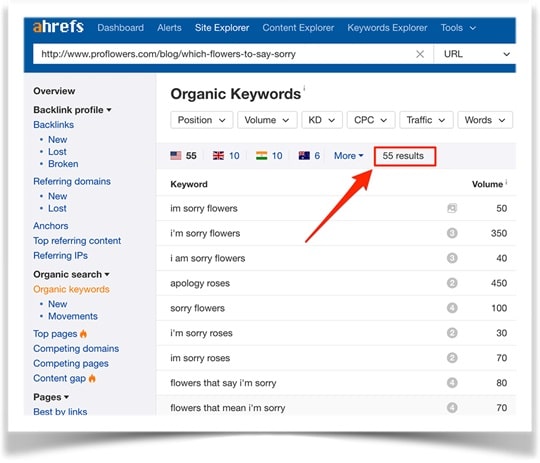
To get this list, I suggest opting for almost any SEO toolkit from Ahrefs, MOZ, SEMrush, etc. that gives you a complete list along with traffic (absolute and percentage of whole) for your own and any other website/competition that you would like to find this information for. Start with your own and compare with close competition.
5 KEY STEPS TO KEYWORD RESEARCH
Step 1: Aggregation of the obvious choices
- Competitive keywords: Pick out what is relevant to you from the list you pulled out earlier from your toolkit.
- Brand Led: Include brand, sub brands, taglines, or commonly used phrases or combination of words to describe a service.
- Category Descriptors: So if this is a restaurant then these would be food, desserts, main course, menu, appetizers…etc.
- Service/Product Descriptors: Taking the same restaurant example, these would be pasta, pizza, cold coffee, Mediterranean food, Italian food, anything and everything that could describe what you do.
- Landing page mapping: Go back and review every single one of your goal/conversion pages and make sure that you have keyword(s) that correspond to them.
Step 2: Include ideas for new opportunities
Keywords or search strings are used by customers are every step of their journey cycle - be it exploration of a related service or comparison of prices between shortlisted services and finally for problem resolution / support once a purchase has been made. Ideally a brand should be visible at every single step of this cycle though keywords closest to the purchase naturally have the highest possibility of conversion.
I would recommend inviting your complete team including senior management in a room and identifying the highest high value touch points and the underlying customer intent /segments (and the search strings / keywords that best map into them). You can then run these ideas through a tool like Adwords planner or even any of the toolkits that you have subscribed to like SEMrush, Moz, Ahrefs and feed in the combinations aggregated above. You will get many more ideas along with their traffic, competition and other valuable details.
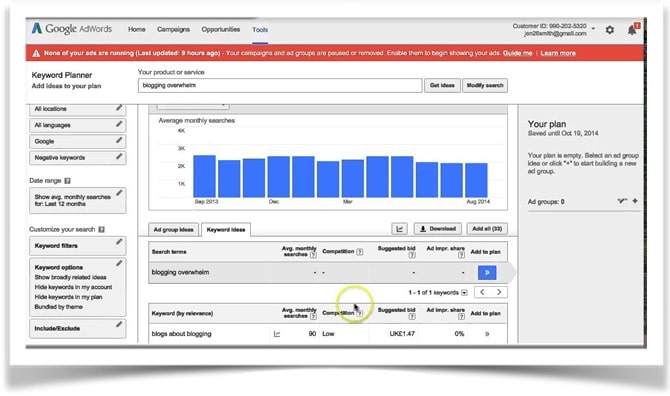
Step 3 : Make the trade offs
You cannot rank for every single keyword that you want. If a page is strong for a certain keyword, it may not be as strong for another. Attempting to be relevant to every viable customer segment ( and therefore rank for every possible keyword) is one of the most common mistakes marketers make.
To make the final selection consider the following.
- Current rank: If the keyword is between pages 2-3, then there is a good chance that you can bring it up in the next few months with some effort. These are low hanging fruit and need immediate focus and words that you are already a good match for.
- Relevancy: Apply filters of expected ROI (some services are more profitable), urgency (an event or launch in a few months) or simply strategic importance (CEO’s pet project) to prune down the list further.
- User intent: You want to make sure there is enough specificity to ensure desirable intent against a generic information search. “Cheapest flights” is far more likely to convert as compared to “best destinations in June”. And it is also why “best cheese burger” is not a really good keyword from a conversion perspective.
Step 4 : Track the finalists
It’s important to understand that most people review SEO performance in terms of organic traffic growth and keyword rank performance so keeping that in mind I suggest the creation of 3 separate lists.
Immediate Wins ( 3-6 months) These are keywords for which you already have a reasonably high position and which are likely to move up in a short period of time. It is important to understand that progress on these will automatically give a boost to others which are not on this list as well. Plus it will give you a meaningful inflection in traffic which is good for morale (and increased budgets if needed for more creative activities).
Strategic focus( 6-12 months) These are keywords that you may not be ranking for at this time (due to lack of sufficient content or sub optimal tagging or focus) but are closely aligned to the core business and therefore words you think you deserve to rank for. In making a separate list with a different timeline, you manage expectations better.
Aspirational (12 or more months) These are typically keywords that while relevant, are TOO generic or highly competitive. These require substantially greater effort and are best parked while you build smaller wins on the ones which are more achievable. Having these in a list allows you yo use them when possible for content without necessarily needing to show ranking progress on them as part of your SEO project.
Final Step 5: Landing page content
Once you have found the keywords that you want to rank (better) for, the next step is to ensure that you have a keyword-relevant, goal aligned page to bring home the visitors to.

It’s important to understand that Google will factor session time/bounce from the page to decide your rank for that keyword the next time it shows up. So it is NOT enough to bring a person to a page through keyword stuffing or some other SEO hack, you need to be able to KEEP the visitor on the page long enough to signal relevance and protect the rank you have worked so hard to achieve. Side benefit: this relevance will also feed into your quality score and boost PPC efforts.
Designing a great landing page is somewhat outside the scope of this article but you should check out Rand Fishkin’s video on “Should My Landing Page Be SEO-Focused, Conversion-Focused, or Both? - Whiteboard Friday”. It’s a great resource to clarify your concepts.
Lastly these are some tips that you may want to keep in mind as part of your SEO and content strategy.

- Even if you manage to hit the first rank for any keyword, the decision to click will depend on the meta tags and descriptions that describe your page and service. To my mind, these are even more important than the actual landing page copy as they are the gateway to the website.
- Every keyword on your list should have a landing page that addresses the query in the best manner possible. Take a moment to analyze pages ranking above yours to see how their content is better or different. It is not necessary to use the keywords is a particular density or order. Your goal should be to genuinely try and be the best possible answer or solution to the keywords you want to rank for.
- Finally, remember to maintain your keyword list as a reference document for all content creation, whether that’s emailers, blogs, social posts, or even speeches that will ultimately help amplify your brand authority for those keywords. You don’t need to include MISSPELT words, grammatically INCORRECT phrases and IlLOGICAL constructions. Search algorithms search for content on the basis of perceived “user intent” as opposed to an exact keyword match.
( Note : This does NOT apply to brand / proper noun related misspellings )

I hope that this guide helps you get started on researching identifying the right keywords for your business. You can also read our TOP 10 ADVANCED SERP FEATURES on more insights on ranking.
As I shared in Why a free SEO tool junkie finally joined the paid club, we survived for years without a paid membership to any tool, but finally bought the SEMrush membership after landing a very prestigious client who needed what I can only describe as a 360 degree view of the marketing ecosystem.
We were required to research not just their SEO performance but their complete communication approach which included content, PR, social media, and advertising. What wasn’t working so well?? What could we add to our own arsenal? Or in short, what were the digital opportunities that we could leverage given our own strengths and weaknesses?
Our brief was two part. First we needed to do a complete analysis of the existing competitive landscape and basis for our findings. We needed to draw up data driven strategies that would help us outperform the competition.
We considered only 2 other tools before we finalized with SEMrush. These were MOZ and Ahref and while they are both really strong tools in their own right, we felt that SEMrush was better given our very specific goals.
Getting started: The Bird’s Eye View
We had experimented in the past rather successfully with SEMrush’s free trial option so we had some idea of the tool features and leverage points. Our first stop was the domain overview and the traffic analytics which allowed us a bird’s eye view to identify areas that merit further/in-depth exploration.
While both traffic analytics and domain overview tools seem to provide a snapshot of a website, they have different data sources and should be used for different goals. Domain Analytics makes estimations based solely on keyword position, so the traffic shown is only an estimation of what ranking basis the website could get. It does not reflect non-search traffic like social, referral, or direct traffic and is therefore not as accurate a measure of traffic as is Traffic Analytics which is based on clickstream data.
If this sounds confusing just have a look at the dashboards below and see what data you can expect to get in each.
Traffic Analytics
Traffic analytics is ideal for benchmarking your own traffic performance. Broken down by sources/location/device as well as all the other data cuts you would expect to see on the Google Analytics screen for your own website.
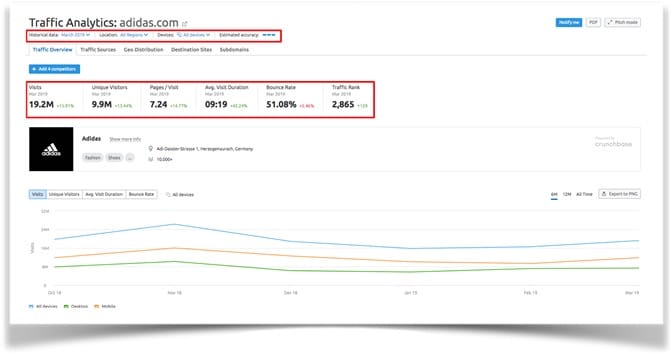
Domain Analytics
Domain Analytics on the other hand is best suited for comparing search performance and helps you create a more complete picture of the competitive backlinks, display ads, and organic and paid keywords.
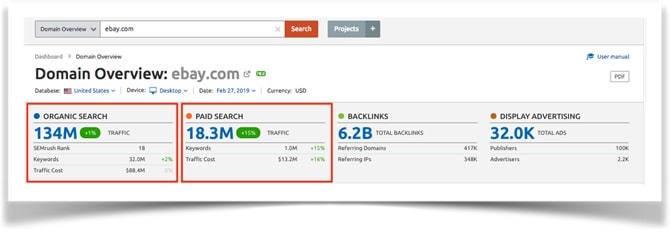
Next steps: getting more specific
A small heads-up, the tool can be very overwhelming given the amount of data, sub filters, and cuts that it can show you. I would suggest you spend some time on the big picture presented by the two tools above to get a better idea of what areas you want to drill into further and in what priority.
For example, you may see that the bulk of traffic is organic, in which case you may want to know more about backlinks and performing keywords. On the other hand, it could be paid in which case you may want to pursue a completely different set of metrics.
There are basically 4 heads under which you can analyze the competition. Each then has several tools under them depending on what information adds up to (what I believe is) a very exhaustive view of what your competition is up to. Each section has provided FAQs and user manuals that can give you a lot of detail on the how and why.
- SEO
- Advertising
- Content and PR
- Social
Now that you have an overview of where they fit in the grand scheme of things, let me explain each of these superpowers in some detail. I’m going to try not into too many details as these are pretty powerful tools and it can get pretty tedious if you try and do everything at once.
A. SEO
A.1. Organic Research
This is great for understanding the keywords that the competition is ranking for, the traffic they are sending their way, as well as to identify new competition that you may not have known even existed. You can also map changes in keyword rankings over time - wins and losses that could be indicative of current weak spots or recent campaigns.
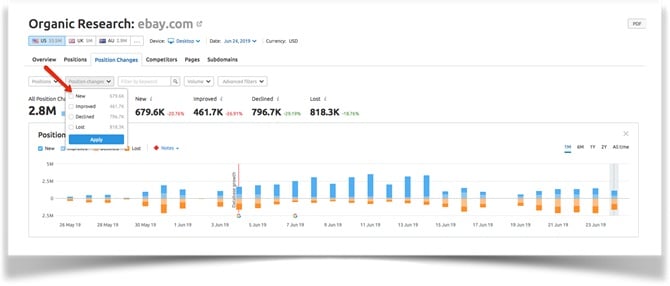
A.2. Keyword Gap (Available for both organic and paid competitors)
This is a keyword focused feature that allows you to compare performance for money keywords across both paid and organic competitors. Placed side by side, you can clearly see competitive strongholds and devise specific strategies to improve.
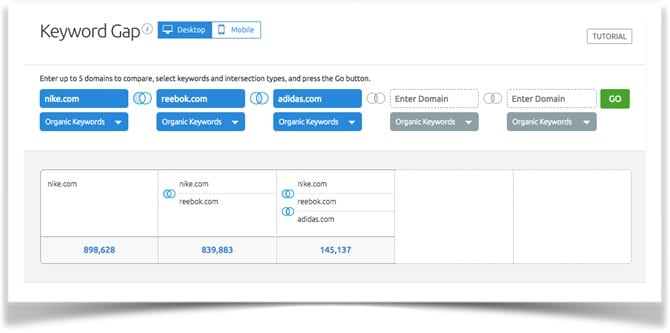
A.3. Backlink Analytics
Given that both the quantity and quality of backlinks are still such an important factor in Google’s ranking algorithm, it makes sense to track and monitor one’s own, as well as competitive links. You can map performance of pages against their backlinks as well as identify toxic links that may be hurting you.
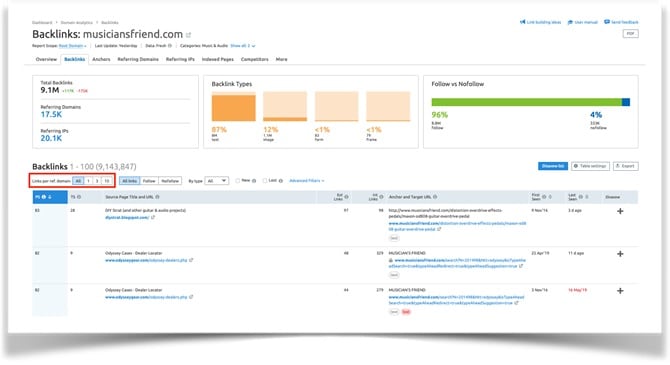
A.4. Backlink Gap
Similar in concept to keyword gap, this allows you to compare your backlink profile with up to 5 competitors side by side, letting you visualize opportunities in a single frame.
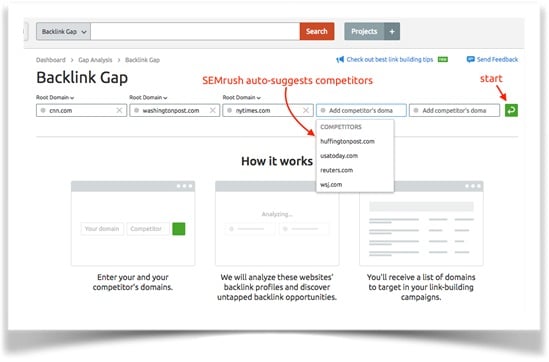
B. Advertising
B.1. Advertising Research
For categories with high amounts of money spent this can be an incredibly powerful tool to unearth several insights that would be hard to find otherwise. You can analyze keywords by cost-per-click, competitive density as well as actual ad copies going back to 2012.
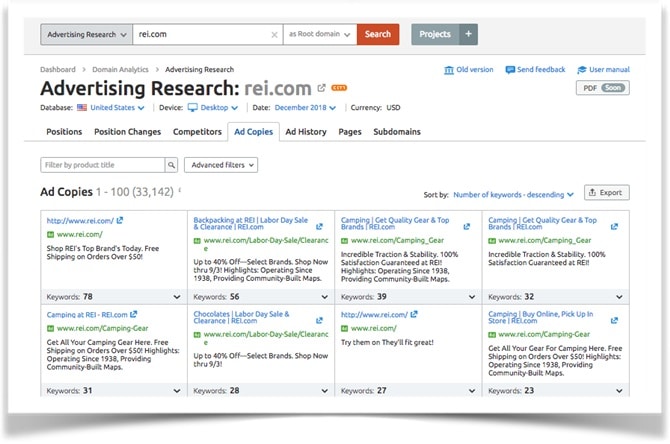
B.2. Display & PLA ( Product Listing Ads) Research
As the name suggests, this section unveils your competition’s display network and shopping campaign strategy in 46 countries. Not only are ads a great fodder for developing your own campaigns and pricing, you also get valuable intel on the keywords that triggered them.
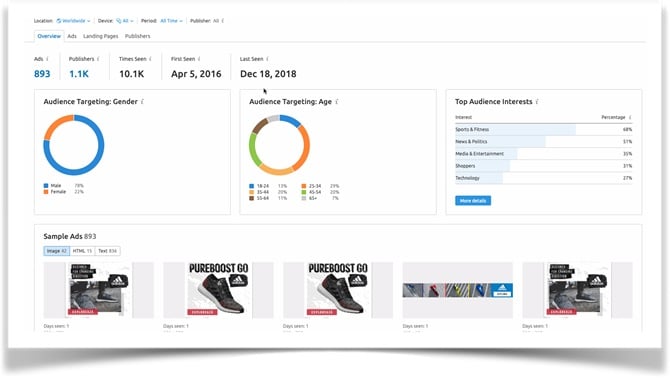
C. Content and PR
C.1. Brand Monitoring
Not only does this track online mentions of the brand that you specify (much like Google alerts), it gives you a lot of detail that makes the insight more actionable. You can see details like total mentions, positive mentions, mentions with backlink, specific domains giving you love, and so much more for the specified campaign and date range.
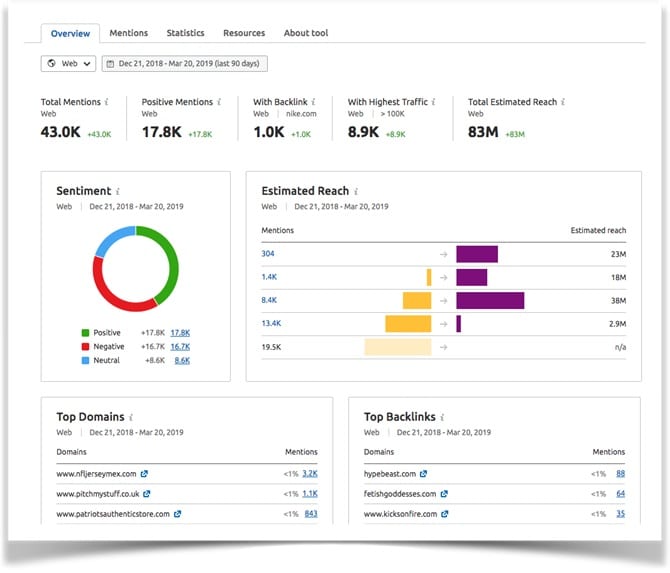
C.2. Topic Research
Frankly this is a great tool to find websites that cover the same topics as you or get an in-depth idea of competitive content. You can also generate ideas, headlines, questions, and a neatly laid out mind map to help you come up with your own content ideas.
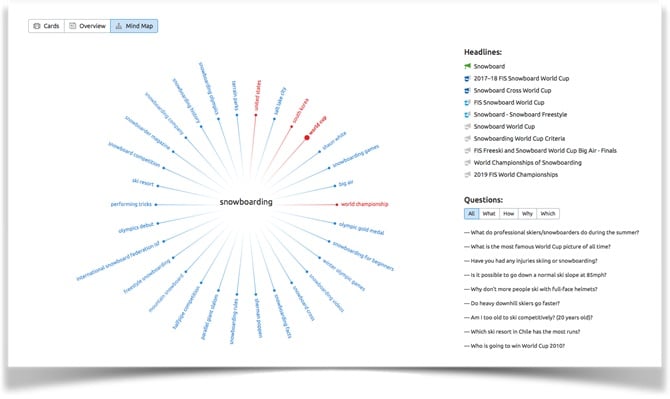
C.3. Post Tracking
This feature is useful to track the success (or failure) of your own and your competitor’s third-party content efforts. You can see the keywords that it’s ranking for, shares, backlinks, referral traffic, and estimated reach of individual content assets within any campaign.
![]()
D. Social
D.1. Social Media Tracker
Last, but not least, the SEMrush competitive toolkit lets you monitor and track performing content for your competitors across Facebook, Twitter, Instagram, YouTube, Pinterest, and LinkedIn.
![]()
In summary, the real power of an SEO toolkit does not lie solely in its ability to give us hard metrics against our own performance, but the ability to give us metrics for the complete brand ecosystem. Focusing only on one’s own progress is taking a very uni-dimensional view that misses out on the complete picture.
You may also want to view the video below for additional information.
You can opt for a 7 day free trial today and get going. We look forward to hearing about your experience with competitive analysis tools or any questions that you may have in the comments below.
First a quick confession - In my 12 years as a digital marketer, I have shamelessly relied on free trials provided by SEMrush, MOZ, WooRank, Raven as well as the mostly free tools in the Google suite like Google Analytics, Keyword Planner etc. for SEO and other digital marketing.
My simple logic was: Why pay when you can get it for free?
Our data requirements were mostly concentrated around initial proposal presentations and client reports. Work that was easily achieved by the many, many, and I cannot stress this enough… MANY free tools. The other big reason for our inertia was simply the complex maze of brands, subscription levels and the features on offer.
What EXACTLY did we need? How often would we use the killer feature we were buying it for? Which tool was better? How many users made sense? What about the other 63 features that looked useless? Nobody was really sure.
Every time we set about to navigate the price value equation, we were simply not convinced we needed paid access. And so, it continued until 2 years ago when we landed an in-depth backlink audit assignment for an ORM client. After a 3-day (and 4 night) struggle to do it manually, we finally ponied up and paid $199 for a basic SEMrush Guru membership plan.
AND THAT'S WHEN WE FOUND OUT WHAT WE HAD BEEN MISSING!!
Don’t get me wrong, You don’t need to pay for tools to get results. To be clear, anything a tool can do, admittedly people can do as well. But after a certain point in any account’s SEO trajectory, opportunity knocks at the most unexpected and deep dark places that you would be hard pressed to find without an automated bot.
Plus, if you are an agency, just think of the math.

A $100 monthly tool will pay for itself if it can save you even 6-7 hours of resource time per month OR/AND give you insights into untapped opportunities that help you earn back that amount!
For us it did that many times over and then some.
More credibility. More business
While tool-generated data definitely made our SEO workflow faster and easier, the biggest win came from the least expected place. It was the easy confidence of being able to screen share real time progress data while defending account strategy on an international call with an irate client at 6 am. And then again at 9 am follow up call with the local team... impressive, right?
The point I’m making is that when you have ready, third-party verified keyword rankings at your fingertips, it gives you a much-needed edge. For me, this one advantage alone made the tool subscription worth its cost many times over. For our business it translated to increased transparency and more credibility in regard to our progress updates. They no longer had to take our word for it.
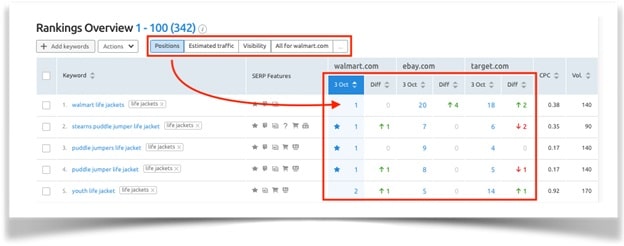
Better visualization. Better insights
As SEO consultants, our job is not about just executing “one size fits all” strategies. A big part of the job is tracking performance - for the client and its ecosystem. Which pages are ranking better for which keywords? Is the new keyword-rich content helping us or just confusing the customer?
When scraping the data from free tools, you pull out what you need at pre-defined, budget justified intervals, and that’s that. You don’t have the luxury of cross mapping 10 different data streams you can refresh at the click of a button. You NEVER sit long enough with this otherwise hard-to-find-data to discern patterns in competitive strategy or gaps in your own.
SEMrush provided us with a lot of additional insights that cannot be pulled from native analytics tools. To take an example, Google Console can’t tell you what kind of pages are ranking for specific keywords. It also provided tremendous insight into competitive keywords, copy and spend or any noticeable shifts in SERP results.
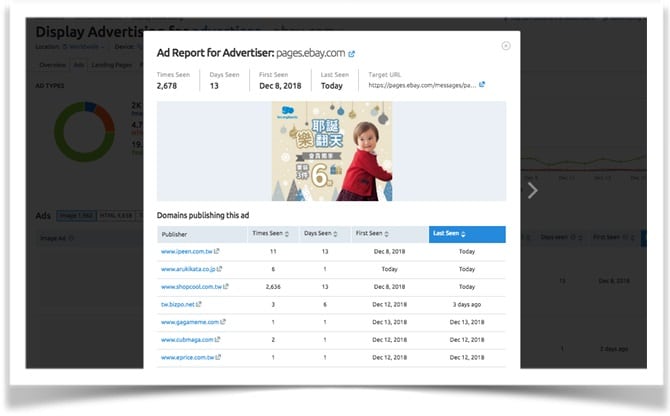
More interesting, fun, and yes, even happy SEO
Umm..how should I put this… the tools are seriously cool. Post SEMrush, our team members shared their experiences of how their jobs felt far more strategic and important. Instead of churning out a standardized set of “to-dos”, they now had the power to explore and experiment with unique insights that helped them do their job more creatively.
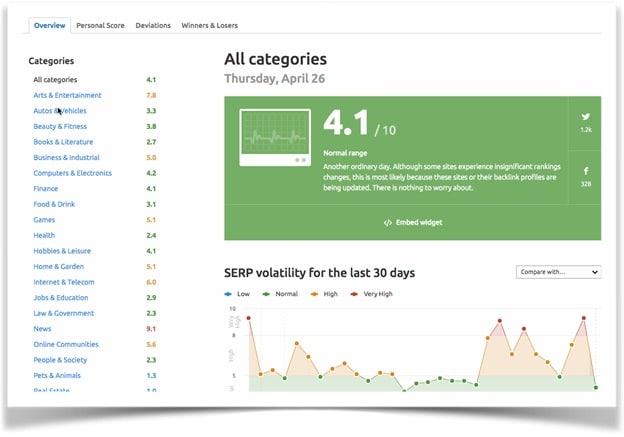
Efficiencies of course went up as did team morale. Software is just better able to handle repetitive, monotonous time consuming tasks. Especially at the end of the workday (or workweek) when everybody has their eye on the clock.
Furthermore, on a retainer model, every client interaction whether that’s mail, report, or call is ultimately a pitch to retain the business going into the next month. In addition to reports, the team would often cut and paste screenshots in support of the approach suggested. Not only are tool-generated insights better packaged, you can rest assured you haven’t missed a trick. Peace of mind all around.
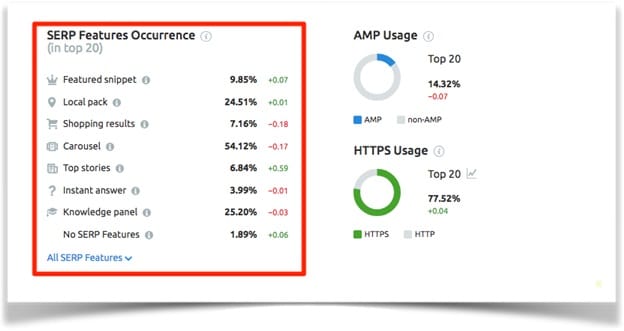
While the case I made above is specifically in the context of an agency workflow, everything I said is also applicable to a marketing manager working to increase his company’s rankings.
Having a good tool is like investing in a 24-7 digital assistant that amplifies your efforts and saves you precious time. It showcases your efforts and puts you in the driver’s seat. And In some cases, it may also be a superior alternative to outsourcing your SEO depending on company budgets and goals.
My team at CreativeLipi.com continues to use the SEMrush SEO toolkit but a lot of the other tools like MOZ, WooRank, Raven are also worth exploring depending on your specific digital goals.
Have you not come across people advising you to use the right keywords to get better results? It is certain you have because it is widely believed that search engine traffic can be significantly escalated with the use of proper keywords. You may have also seen that a huge chunk of the traffic you get comes from the viewership of only a handful of your blogs. This happens because you probably have used certain keywords in those blogs which are most searched by your viewers.
So, when you embark on the task of optimizing your website or blog, one of the first things you must teach yourself is using keywords. If you can master the art of conducting better keyword research depending on what your audience wants, you can create just the right kind of content to get higher ranks in search engine results. To understand how to do this, you need to first realize who ranks your content. It is, basically, a machine-run algorithm whose job is to detect specific signals for ranking the content in the right way. Ranking refers to the order by which pages are going to show in a SERP or Search Engine Results Page.
How do keywords help increase traffic to your blog?

A keyword is the phrase or word that’s responsible for driving traffic to any URL. A site which has been SEO-optimized is going to speak the same language like its visitors, using keywords which link these viewers to the site.
Target keywords are crucial elements in SEO. This also means that you have to understand how your buyers will be searching for the products you offer. Knowing this is going to help you make it easier for them to locate you.
What is keyword research?
Choosing the right keywords is an important task that involves trial and error. When you are new to the world of marketing you are likely to falter in finding the right keywords. You are may end up conducting keyword research only once and not even updating or expanding this keyword list thereon. Some marketers also make the mistake of using only the most popular keywords. The truth is that keyword research must be evolving and continuous. As a marketer, you will need to re-evaluate the earlier keywords from time to time.
[bctt tweet="Competitive, high-volume keywords may be substituted with more specific phrases to attract just the right audience." username="relevance"]
This audience will be the one to look out for because they are the ones who are going to search for your products and services actively.
Here are some easy guidelines you can follow to ensure that you score ahead of your competitors:
Use Right Keywords
You need to search for the best SEO keywords. This means you will need to keep the SEO keyword list updated at all times; else you will miss out on your target customers. You have to steer clear of using keywords that are too popular because these will invariably be more competitive.
For instance, if you use the exact same keywords or content like your competitors you will be unable to make a strong impression on your audience.
Use Tools

You should start using keyword search tools that will help you track the results. SEMRush for instance, uses a unique method to do keyword research by assembling important keywords research tools all in one place called the Keyword Magic tool.
When you enter just one seed keyword in it, it can create an entire keyword empire for you around it. While keyword research may not be rocket science, you cannot just select any random keyword to get started. Big companies often have teams dedicated for doing keyword research, but smaller companies and startups cannot afford this luxury. This is why they must make use of the right tools, of which many are free of cost.
How can you use SEMRush to do keyword research?
SEMRush can help you find the right keywords. It helps you see which ones get your site higher rankings and it can also let you spy on competitors. You can choose your top blogs and add these to the tool to see which keywords are bringing in more viewership. Once you know this, you can use this tool to create unique high-quality content centering on those keywords.
Healthy Mix
It is useful to keep a good mixture of long-tail keywords and head terms to get desirable results. The long-tail keywords typically have three words or more while head terms will have very short or simple keywords.
For instance, an example of a head term may be “cooking tips”, while an example of a long-tail keyword may be “how to make the perfect roast chicken”.
While head terms are competitive, long-tail keywords are much less so. You will find hundreds of sites providing useful cooking tips and this is why it is hard for these sites to get a high ranking for a head term. When you understand your audience better, you can create more effective long-tail keywords. It is best not to keep all your eggs inside one basket; rather, you should maintain an optimum balance between long-tail keywords and head terms.
Filter Keywords
You need to filter the keywords by industry or country in order to focus on the right keywords. Keywords are typically short-tail or long-tail and, while the former have one or two, the latter have three or more words. Short-tail keywords may bring you more traffic but because they are very competitive you will find it challenging to rank an ecommerce site for them. Short-tail keywords are also less relevant and do not bring in high conversions. In comparison, long-tail keywords constitute nearly 70% of all searches.
Make Keywords Work
When you have identified the right keywords, you need to ensure that they can do their job well. You must group these keywords all through the high-visibility areas in the site or blog, from titles and body text to URLs and to meta-tags and image file names. You may also experiment with these keywords.
For instance, you could try to see which parties are using the same keywords and then figure how to make your content stand out. Your objective is to make your target keyword get on the first page of Google. “Volume” is going to tell you how many searchers are looking for a specific keyword in a month; this is vital as it shows you whether or not a specific term is popular. Earlier, it was necessary to specify meta-keywords but since 2017, search engine algorithms can automatically detect keywords.
Keyword Density
It is important to maintain an optimum percentage of what is called keyword density. When the bots are crawling through your page, they decide which keywords that page must be ranked for from this keyword density.
While you need to focus on keyword targeting, you must avoid ‘keyword stuffing.’ This is the over usage of keywords which ends up harming your site ranking.
For instance, the main keyword should ideally not constitute more than 2% of your blog. You can always have more than just one keyword on your page or blog post.
It is, however, recommended that you keep this number less than three. When you over-use keywords, Google bots feel you are ‘spamming’ and trying to trick the algorithm, and so, it penalizes the site in the process.
Understand What Customers Want

You may end up losing sight of the bigger picture when you are too consumed with the nitty-gritty of SEO.
[bctt tweet="You have to look at what your audience wants because this must be the center of any SEO strategy." username="relevance"]
You can then optimize the content centering on their needs or problems.
Narrow Down the Keyword List
Using tools like Google Trends and Google AdWords Keyword Planner you can successfully cut short the current list of keywords. These tools help you see the search volumes for specific terms. So, when any of the keywords has a lower volume as compared to others, you can eliminate it. This practice must be carried out routinely to get rid of words which have become outdated.
Value Individual Keywords
It would be a mistake to give too much importance to individual keywords. Google works hard to make sure there are no loopholes in its algorithm which content marketers can use to their advantage.
Individual keywords are usually part of unethical black-hat SEO strategies and that is why Google keeps moving them. The power of individual keywords is gradually waning and the power of topical words is increasing.
All these tips and tricks show that revisiting keyword research strategies from time to time is a healthy and profitable exercise. This is because once you re-evaluate, you will find that you may need to introduce new long-tail keywords, eliminate some keywords which have low search volumes, or focus on keywords that cater to what your buyers are looking for online.
Did you know that emojis are used in SEO campaigns by many companies in the world? It may surprise you, but these cute little characters are more powerful and versatile than you think when it comes to helping you rank better in search engines.
In this post, I will show you what makes them popular among SEO enthusiasts and why you should use them on your website.
What are Emojis and Why You Should Pay Attention to them?
Basically, emojis are digital icons that represent ideas, emotions, objects, etc. They can be easily found on smartphones, PCs, and websites that use them to complement their texts on messaging platforms.
Recent studies show that 36% of millennials (ages 18 - 34) prefer emojis over text to express what they are feeling and it has been reported that 92% of the online population use emojis.
This trend may be the main reason why search engines and business owners start considering them as a relevant piece of information.
In fact, emojis are considered as metadata in a webpage. It means they act similarly to title tags or rich snippets that will help search engines determine if the page contains the most relevant information.
There's a lot of proof to back that claim, of course. For example, if you search for ?? on Google, do you know what comes out? The famous Baby Shark song.
The same thing applies when you need to find a nearby restaurant, just enter something like "? near me" and you can almost always find the intended results. And guess what: the top websites are using emojis in their content.
But that doesn't mean you can insert an excessive amount of emojis anywhere in your content. Search engines don't like overstuffed websites and readers might also find it unprofessional.
If you're not sure where and when to place emojis, you can contact companies like PRable, that will help you make and optimize the perfect content for your site based on your criteria.
Having said that, you can see how much potential emojis can bring to your SEO, right? I'll show more reasons why you have to start putting it in your content.
Emoji Support From Google
Despite its sudden decision to disregard emojis in 2015, Google is now aware of their potential and decided to revive its support for these icons on their search engine algorithm.
For those who haven't used emojis, this news will encourage them to try something new with their SEO campaigns and see if it can bring better results than text-only content.
Increasing Click-Through Rate
One of the indicators of successful SEO campaigns is the Click-Through Rate, which shows how many people have clicked the provided link to your website.
To attract as many visitors as possible, site owners usually incorporate something that can turn people's heads, such as facts, a big button, or discount info. But guess what, emojis can also make your link pop.
They will help you stand out by showing an image-based icon in all-text results. Viewers are more likely to be drawn to it, thus increasing the chance of clicking.
In fact, there are dozens of experts who have experimented with emojis on their keywords and got a better click-through rate in the end. So, if the trends prove to be useful, why don't you try it for yourself?
Helping Smaller Brands to Shine
When you search for a cool t-shirt on Google, you'll see that it gives you back millions of results, which reflects a lot of competition from the online stores that are involved. Consequently, it's most likely that you can only find famous brands among them.
But when you use an ? emoji to replace t-shirt, Google will display fewer results. Between them, you can see there are some smaller business who were smart enough to use emojis to promote what they are selling.
If you're a business owner who has just started, participating in a less competitive environment might be a great way to go. You just have to make use of the appropriate emojis to your advantage.
Appealing to a Younger Audience
We know that most people who use emojis are between 18 and 34 years of age. Therefore, incorporating emojis to target this demographic can hopefully make your brand relatable and bring it closer to them.
This approach is also one of the best and easiest ways to build trust with your audience.
The great news is, attracting younger age groups can really benefit your business because according to statistics, they account for 30% of online shoppers in the US.
Improve Your Local SEO
While emojis might not help you that much in an online store, they can be far more useful when you have a physical store.
For instance, Google wants to give the most relevant results to users, and one way to do it is to present them location-based information.
Therefore, having an emoji on your website that represents your business, like ☕ for a cafe or ? for a bar, will help you rank better when someone wants to look for that kind of place in Google.
Conclusion
You should never underestimate the power of emojis in SEO. They prove to be powerful and versatile tools to rank your site higher in search engines.
And to the people who haven't incorporated emojis, here's a quick overview of why you should use them in your SEO strategy.
- Emojis are now supported by Google.
- They increase the Click-Through Rate.
- Emojis help smaller brands shine.
- It appeals to younger audiences.
- It’s a chance to improve local SEO.
What are you waiting for? Grow your website with these cute little icons!

